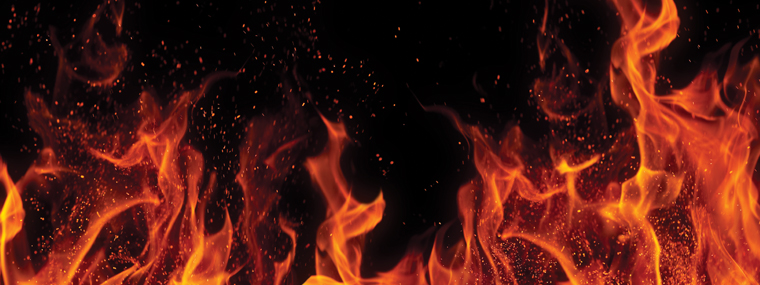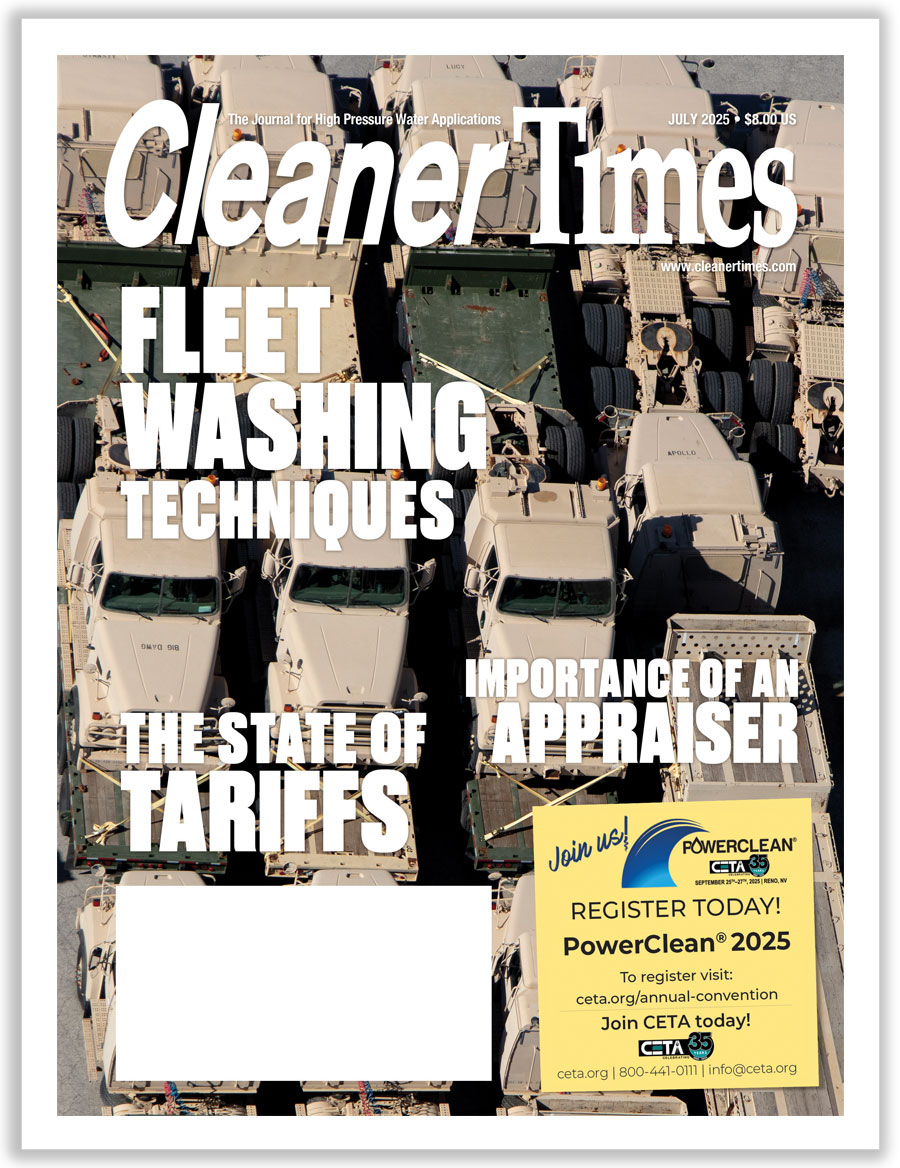
Troubleshooting Burner Issues
By Diane M. Calabrese / Published March 2020

Cesium. Why start with element 55? It reminds us of Robert Bunsen, the German chemist who discovered cesium and rubidium (element 37) in 1860. That’s about 10 years after he introduced the very useful eponymous burner.
As important as rubidium and (especially) cesium are for accurate time keeping, the utility of the Bunsen burner in science and industry deserves high recognition. Not only does the burner enable bench chemists and others to heat, sterilize, or combust on a local and controlled scale, but it also heralds the development of similar, larger, and more controlled burners.
The burner legacy, of course, includes the addition of safety features. Electric starters—not a match or a spark-producing manual igniter—get things going on modern gas, butane, and propane burners. Yet the basics that lead to the best burn—good quality fuel and an even and commensurate air supply (adjusted with a manual lever on a Bunsen) and no residue—remain the same.
Burners in hot water pressure washers may use propane, natural gas, or diesel. Because it is less reactive than propane or natural gas, diesel is typically the choice for portable machines.
Trouble-free burners can be had by scrupulously following the instructions of the original equipment manufacturer (OEM). Topping the list are to use the recommended fuel and follow the maintenance schedule.
If any problem arises with a pressure washer burner, find a solution by recalling the basics of burner structure and function. “Good quality fuel is very important to optimal burner function,” says Jay Hallaway, engineering manager at Alkota Cleaning Systems Inc. in Alcester, SD.
“You need to make sure you have the correct type and grade of fuel to prevent damage to burner fuel handling components,” explains Hallaway. “A good filter that removes contaminants and even water is also important. With atomizing burners, these items will not burn and will cause build-up in the combustion chamber or cause the burner to soot from bad combustion.”
Is there one issue with a burner that emerges more often than others? “I would say improper combustion is the most common problem,” says Hallaway. “Sometimes just a simple air adjustment will go a long way to keep a burner running properly and prevent other issues later on.”
The proper care of burners matters. Maintenance must be a regular part of use. The refinement of atomizing, or the production of an aerosolized spray of fuel, does allow for more complete burns of fuel and a cleaner burn, but it doesn’t negate the need for regular attention to the burner.
“Improper combustion is an issue that is easily prevented by routine maintenance,” says Hallaway. “Check-ing the smoke spot with a smoke tester, checking fuel pressure, and even changing the fuel nozzle with routine maintenance will keep a burner operating correctly.”
Should we be concerned about ambient conditions such as temperature and humidity when troubleshooting an issue with a burner? Not so much, says Hallaway.
“I really don’t notice humidity and temperature having major effects on burner performance,” explains Hallaway. “High humidity can add to condensation issues, but the burner will still burn correctly.”
Temperature may become a significant issue with certain fuels. “Low temperatures, of course, can affect the fuel if it is number 2 diesel,” says Hallaway.
If you are working far above sea level, this may factor in burner performance, too. “I would say the ambient condition that affects the burner the most is altitude,” says Hallaway. “Air adjustments and, in extreme cases, fuel nozzle adjustments need to be made at higher altitudes.”
Pinpointing
Some issues are easier to resolve. For others the root cause may be any number of things. [See sidebar for an additional note on guidance.]
“The most common problem is the burner failing to light the fuel,” says Delany Johnson, senior sales engineer at Wayne Combustion Systems in Fort Wayne, IN. (Johnson adds that in his comments, he makes the assumption of an oil burner on a pressure washer.)
“The most difficult burner issue to resolve is the most common problem—failure of the burner to light,” says Johnson. “This is because of the number of components and adjustment issues that will affect the lighting of the burner.”
What are some of the issues? “Fuel and air in the proper ratio as well as good spark in the proper location are necessary for consistent burner ignition,” says Johnson. “Improper fuel pressure, air in the fuel lines, water in the fuel, old nozzles, misadjusted or worn electrodes, misadjusted air bands, low voltage, a weak or non-functioning igniter, etc., can all cause a burner to fail to properly light when called upon.”
The best way around the necessity of trying to pinpoint a problem with a burner is to strive to avoid the problem with proper maintenance. “Good, consistent burner performance can be achieved with periodic maintenance,” says Johnson.
“Instead of waiting for a problem to arise, the burner and other components should be serviced on a regular basis,” explains Johnson. “Nozzle and electrode replacement, cleaning of parts, changing fuel filters, inspection of fuel lines, checking for loose parts, making necessary adjustments, and verifying proper performance in equipment are necessary to keep the burner functioning at peak efficiency.”
Johnson also stresses the importance of good fuel. “While oil burners are capable of utilizing different fuels, the quality of fuel is important.”
How can quality be ensured? “The fuel should be purchased from a reputable supplier, be free of water and particulates, and meet the specifications of the equipment manufacturer,” explains Johnson.
Can fuel users check on quality? “The best way to evaluate a suspect fuel is to send it to a laboratory for analysis,” says Johnson.
Although ambient conditions generally do not affect burners, there are a few specific times when they may. “Small changes in ambient temperature and humidity will not adversely affect the burner performance,” says Johnson. “However, when used in outdoor applications in the winter, the burner performance can change.”
Viscosity of fuel may increase in cold. “Fuel oils will gel at temperatures below 32° F,” says Johnson.
Sluggish fuel is only one outcome in sub-freezing temperature. “In addition, the density of the air changes, and air band adjustments may be needed to compensate for this,” says Johnson.
Burner as Bridge
Even before the advent of bio-diesel fuels and diesel fuels with synthetic additives, storing fuel in a tank for long periods was never a good idea. Prior to storage for any period of time, empty the fuel tank. For shorter intervals, the tank can be topped.
Allowing fuel to mix with air in a half-empty tank for a long period contributes to its alteration (and degradation). In the case of biodiesel fuel, acids may form that can later attack components of the fuel tank.
More varied fuel types—all aimed at strong performance while generating fewer pollutants—are here to stay. So, too, are methods such as producing a thermal aerosol of oil fuel; the aerosol improves combustion and at the same time contributes to the reduction of NOx chemicals in most cases.
The oil burner bridges many of the issues of industrial processes and air quality that concern regulators and the public at large.
Keeping a burner in optimal working condition reduces breakdowns and time lost to correct them. It also contributes to better air quality, an issue that is tying pressure washer burners more tightly to regulatory requirements.
In California, operators of pressure washers must now file Form 222-PW to register their equipment at www.aqmd.gov/docs/default-source/default-document-library/222-pw.pdf?sfvrsn=0. Registration is required for any pressure washer that is equipped with a heater or burner fired on diesel fuel with a corresponding heat capacity of 550,000 Btu per hour or less and a maximum NOx emission of less than one pound per day—and uses no more than 50 gallons of fuel per day.
The registration is part of the California Air Resources Board Airborne Toxic Control Measure (CARB ATCM). The registration form cited in the preceding paragraph is from the South Coast Air Quality Management District (SCAQMD).
Expect more stringent requirements for burners to come as efforts to control emissions increase. Keeping burners in top-performance condition is an imperative, as an environmentally friendly burner on a hot water pressure washer is just one of many bridges to the future.
Guidance
Manufacturers and distributors both offer advice on troubleshooting burners. One example is the ADC 12Vdc Oil Burner Manual from R.W. Beckett Corporation Inc. (See www.beckettcorp.com/wp-content/uploads/2015/01/ADC-12v-Burner-Manual.pdf.) A Troubleshooting Chart (Table 4 on page 14) lists symptoms, such as oil not igniting, no flame, and no oil spray. Each symptom is aligned with a list of possible causes. No flame? Check first for a plugged oil nozzle. If the nozzle is clear, go to the solenoid valve. If it’s actuating, make certain the valve is opening or closing properly. A model of clarity and detail, the troubleshooting chart itself includes cross referencing, so if there is no oil spray and a broken or stripped coupling between pump and motor is the cause, the manual user can immediately link to the section on drive component maintenance.





